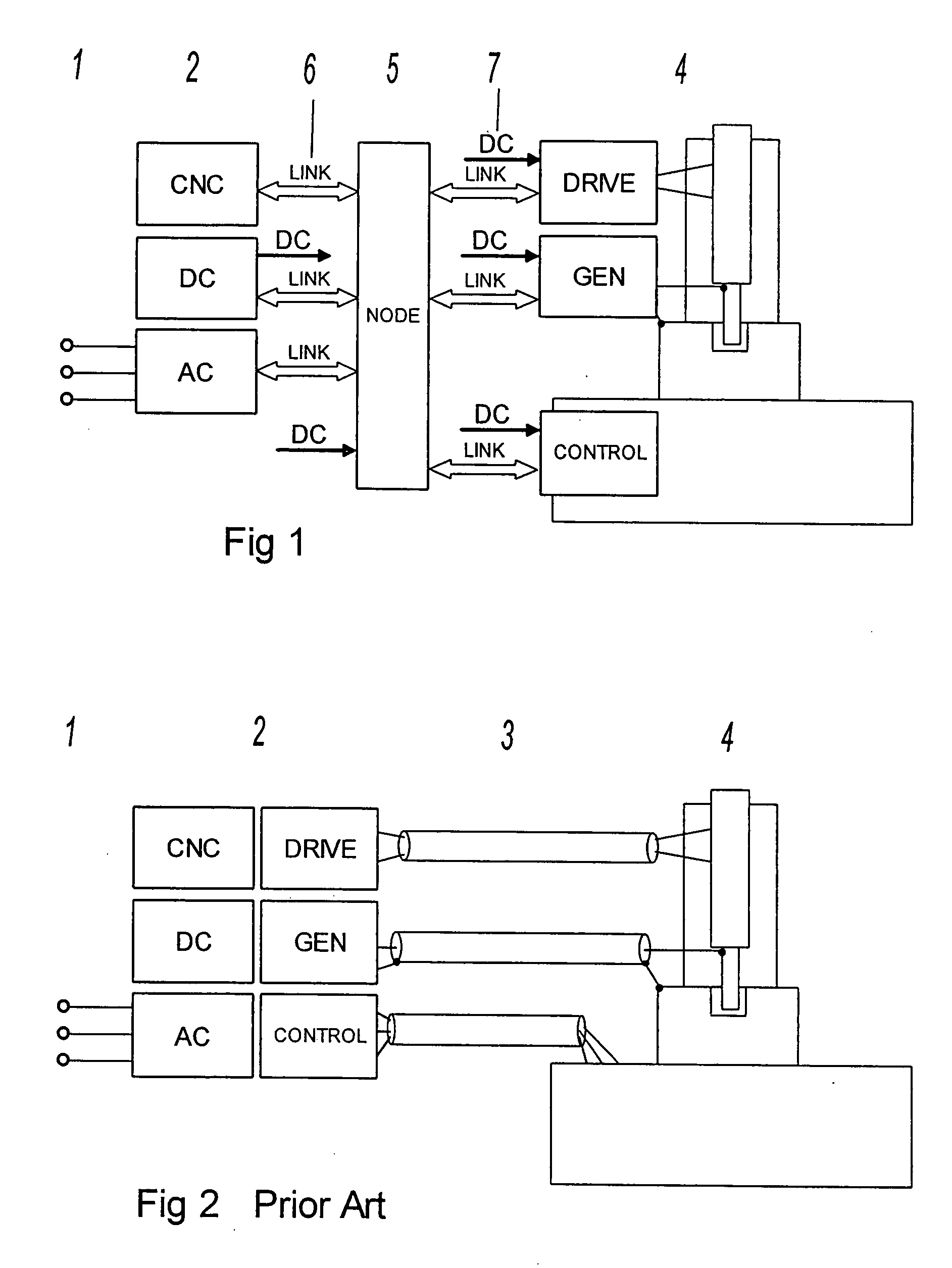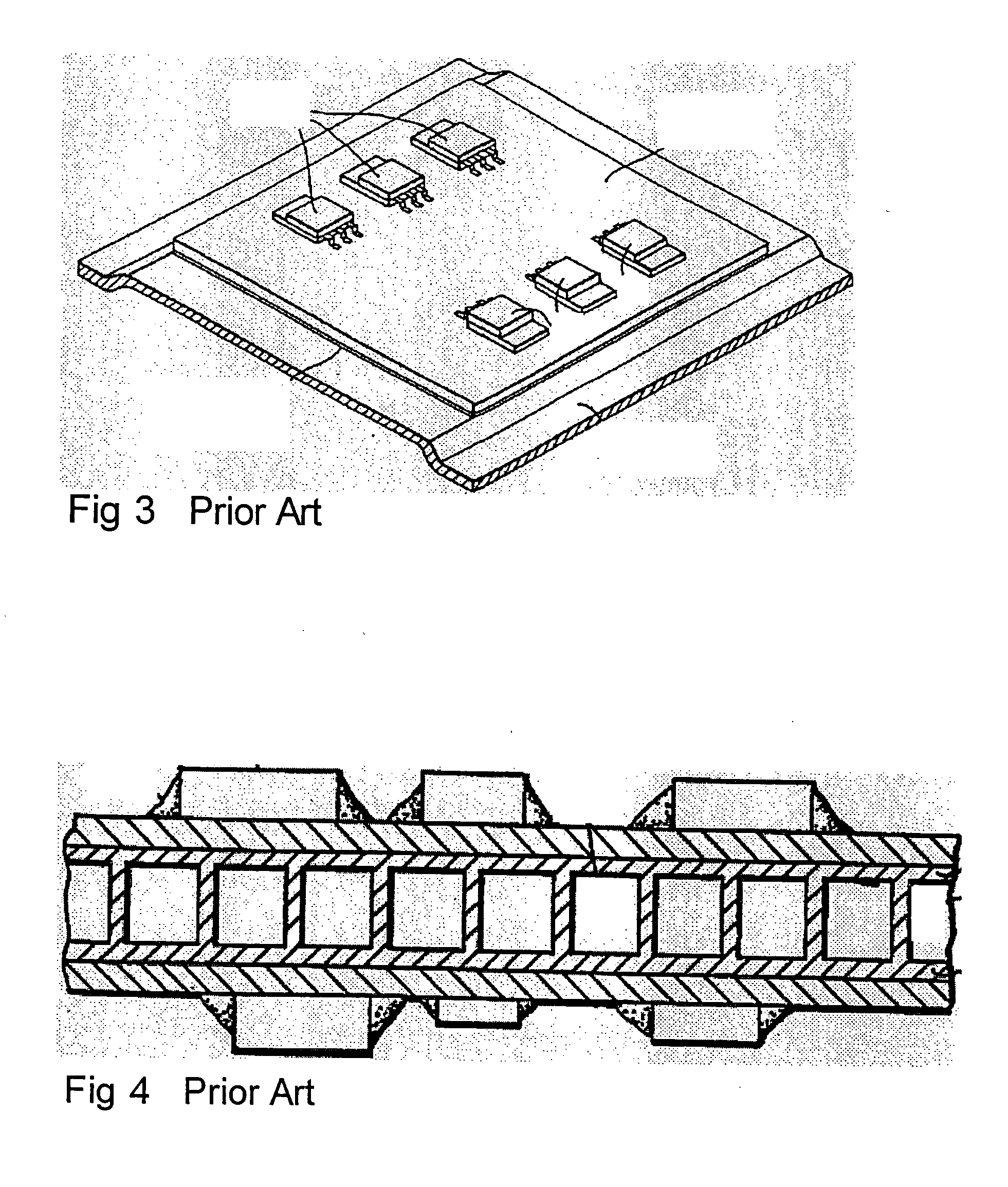Circuit board unit and method for production thereof
a technology of circuit board and production method, which is applied in the direction of ceramic shaping apparatus, special surfaces, electric devices, etc., can solve the problems of inability to repair partial failures in modules, inability to realize more complex circuits, and inability to realize complex circuits. to achieve the effect of adequate removal of hea
- Summary
- Abstract
- Description
- Claims
- Application Information
AI Technical Summary
Benefits of technology
Problems solved by technology
Method used
Image
Examples
first embodiment
[0060]The advantage of this first embodiment for a power module is a hermetically sealed package simply by adding sidewalls 22 and structural parts 32, 35, 37. The outer surfaces mainly involve cooling plates which effectively prevent heat being dissipated to the environment. Currently popular methods are sufficient for fabricating the circuit boards and their soldering.
second embodiment
[0061]Referring now to FIG. 8 there is illustrated a power module in which a power board 26 is backed by a control board 27. This arrangement is of advantage when system packs as shown in FIG. 9 are wanted. In this arrangement, firstly a power module is arranged as shown in FIG. 5, then supplemented by any number of modules as shown in FIG. 8, and finally the system pack completed with a control module as shown in FIG. 6.
[0062]The configuration as shown in FIG. 8 is somewhat problematic because of it involving a module which needs to be soldered two-sidedly. Although this can be done with current technology, any subsequent repair or modification poses difficulties. This is why two alternatives are now proposed. Either the cooling plate 16 is duplicated, i.e. a power board as shown in FIG. 5 and a control board as shown in FIG. 6 assembled back-to-back into a power module for reseparation at any time, or the control board 27 is releasably connected to the cooling plate 16. Since the ...
third embodiment
[0073]Referring now to FIG. 10, there is illustrated an even more effective solution. This third embodiment of a module comprises recesses 28 in the cooling plate 16 for interfacing connectors 29. The cooling plate 16 which is preferably made of aluminium or copper is an excellent shield against both electrical and high-frequency magnetic interference. Depending on the SMD profile the connections between the control board 27 and the power board 26 tend to be somewhat shorter.
[0074]The problem of two-sided componenting is in this case the same as in the second embodiment as shown in FIG. 8 and the solutions thereto are likewise the same as proposed by way of FIG. 8. The modules as shown in FIG. 10 can also be stacked into system packs as described above. But the modules should be preferably stacked so that it is always the case that power boards or control boards directly face each other. This saves providing partitioning and just a backplane 30 and a face plane 31 are sufficient for...
PUM
| Property | Measurement | Unit |
|---|---|---|
| voltages | aaaaa | aaaaa |
| power loss | aaaaa | aaaaa |
| power loss | aaaaa | aaaaa |
Abstract
Description
Claims
Application Information
 Login to View More
Login to View More - R&D
- Intellectual Property
- Life Sciences
- Materials
- Tech Scout
- Unparalleled Data Quality
- Higher Quality Content
- 60% Fewer Hallucinations
Browse by: Latest US Patents, China's latest patents, Technical Efficacy Thesaurus, Application Domain, Technology Topic, Popular Technical Reports.
© 2025 PatSnap. All rights reserved.Legal|Privacy policy|Modern Slavery Act Transparency Statement|Sitemap|About US| Contact US: help@patsnap.com



